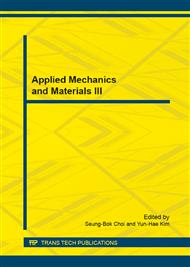p.892
p.896
p.901
p.906
p.910
p.914
p.919
p.927
p.943
Progress on Research of Machining of Difficult-to-Machine Materials Using CBN Cutting Tools
Abstract:
Some engineering materials have excellent performances, but the machining of these materials is a problem. It is very inadequate to meet machining requirement only using traditional cutting tool materials. Therefore, exploring the machinability of difficult-to-machine materials and applying appropriate cutting tool materials have drawn much attention in metal cutting industry for guarantied product quality and productivity. Cubic boron nitride (CBN) has been recognized as one of the most suitable cutting tool materials due to its high hardness, high wear resistance, high chemical inertness, and excellent chemical stability in high temperature. Research on various aspects of CBN cutting performances has been conducted in recent years. This paper presents the progress on machining difficult-to-machine materials using CBN cutting tools.
Info:
Periodical:
Pages:
910-913
Citation:
Online since:
January 2015
Authors:
Price:
Сopyright:
© 2015 Trans Tech Publications Ltd. All Rights Reserved
Share:
Citation:


